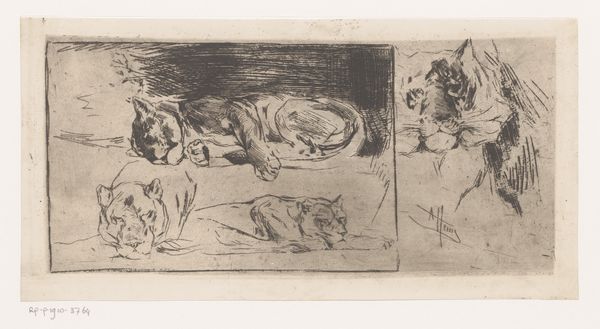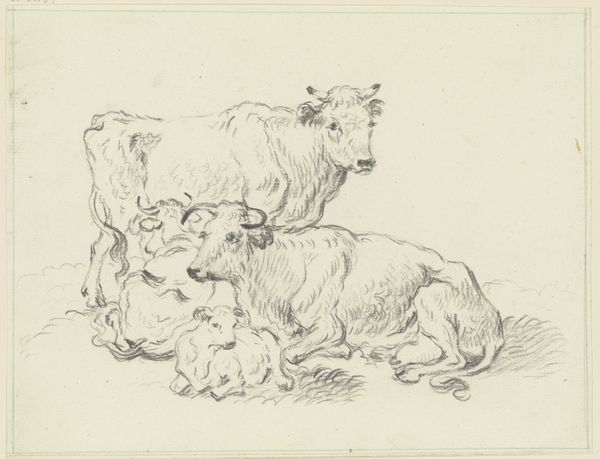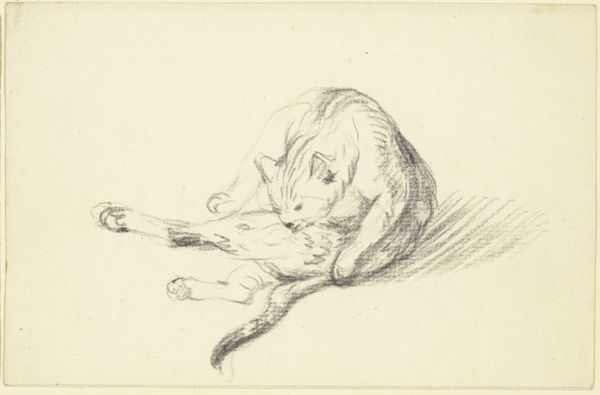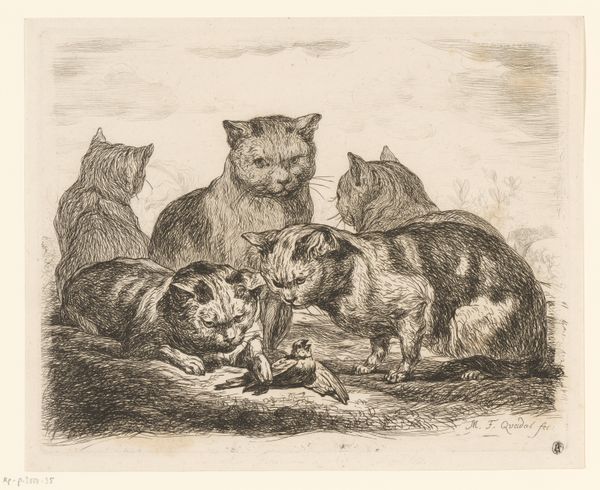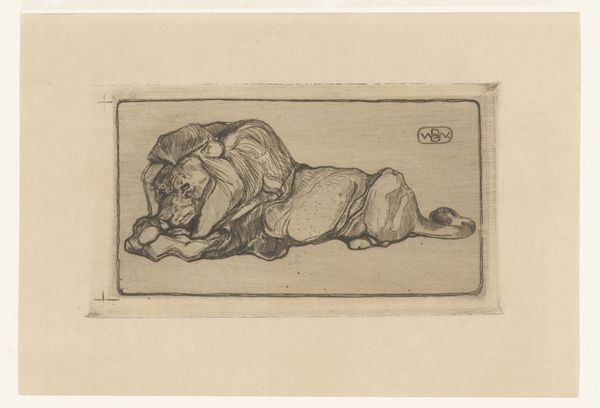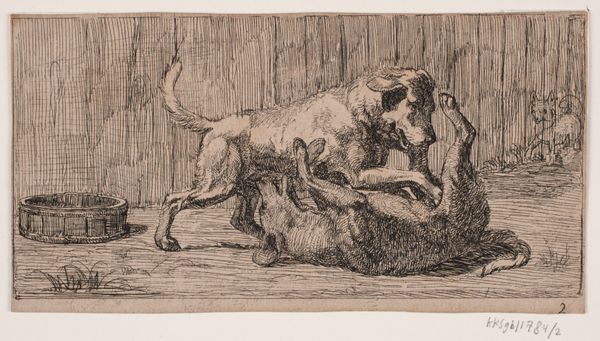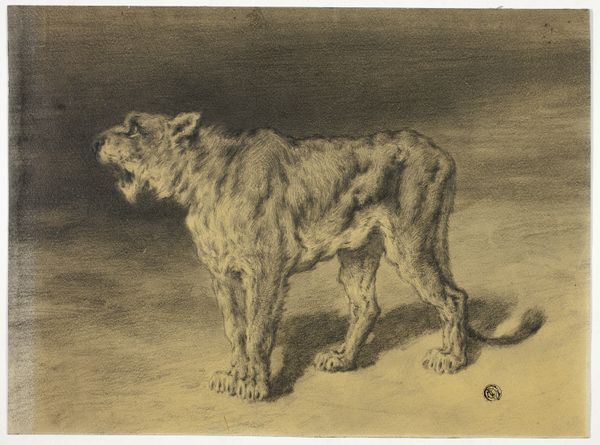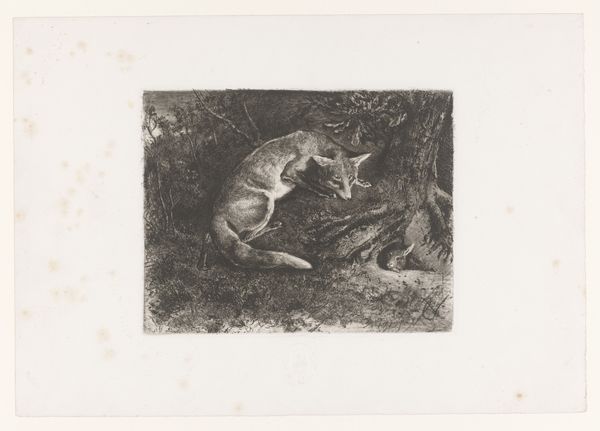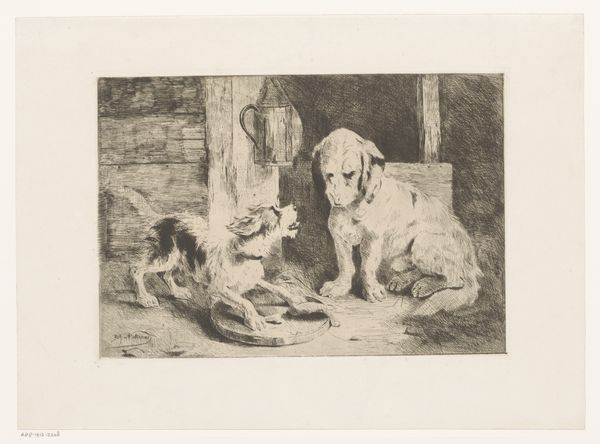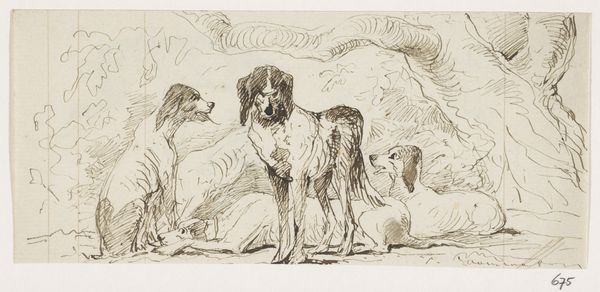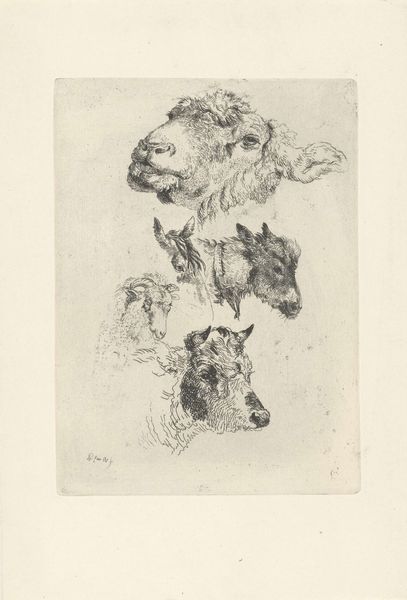
drawing, pencil
#
drawing
#
landscape
#
pencil drawing
#
pencil
#
realism
Dimensions: height 390 mm, width 450 mm
Copyright: Rijks Museum: Open Domain
Editor: Here we have Dirk Homberg’s “Drie jonge geiten,” or "Three Young Goats," a pencil drawing created sometime between 1895 and 1941. It’s charming! What stands out to me is how tenderly he renders these animals, but there’s also a stark contrast between the dark background and the bright, almost luminous goats. What do you see in this work? Curator: Well, your reading hits on some key elements. I am intrigued by that very contrast you noted, because it speaks to larger societal structures during the time this piece was created. We could think of this drawing as a reflection on marginalized communities during that period. Considering Homberg’s life in the Netherlands in that time frame, how might these delicate creatures, highlighted against a somber backdrop, represent vulnerable populations? Editor: Hmm, I hadn't thought of it that way. Are you saying the goats, as farm animals, become a symbol of the working class? Is the contrast maybe a comment on the hardships they face? Curator: Precisely. Think about the pastoral scenes often romanticized in art; this feels different, right? The artist doesn’t shy away from the realities. The rough pencil strokes and the somewhat confined space these goats occupy adds to this feeling, don’t you agree? What if it serves as a microcosm for society? How does the composition itself reflect power dynamics? Editor: I see what you mean. It's not just a cute drawing of baby goats. It becomes a quiet commentary on society, a voice for the voiceless. Curator: Indeed! It shows how art can transform seemingly simple subjects into potent social commentary. And for me, this really opens my eyes to what art is all about. Editor: Thanks! I’ll definitely keep this perspective in mind moving forward.
Comments
No comments
Be the first to comment and join the conversation on the ultimate creative platform.
